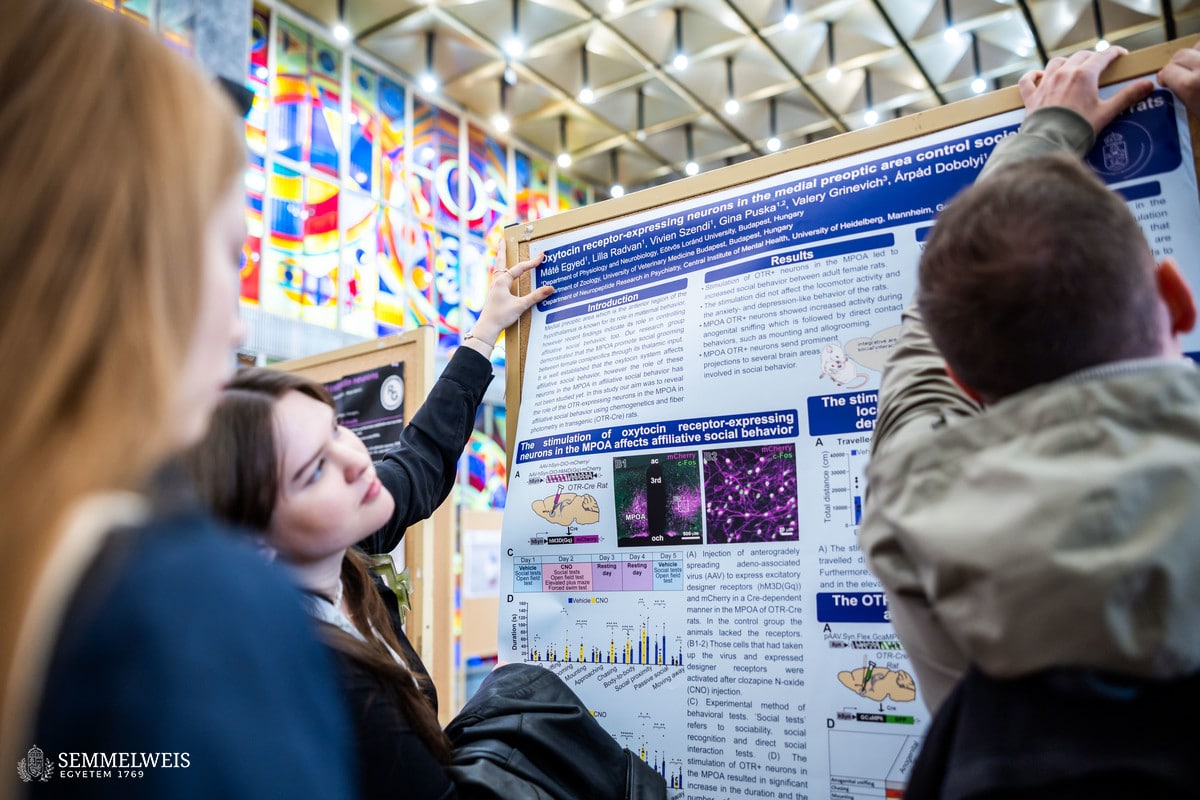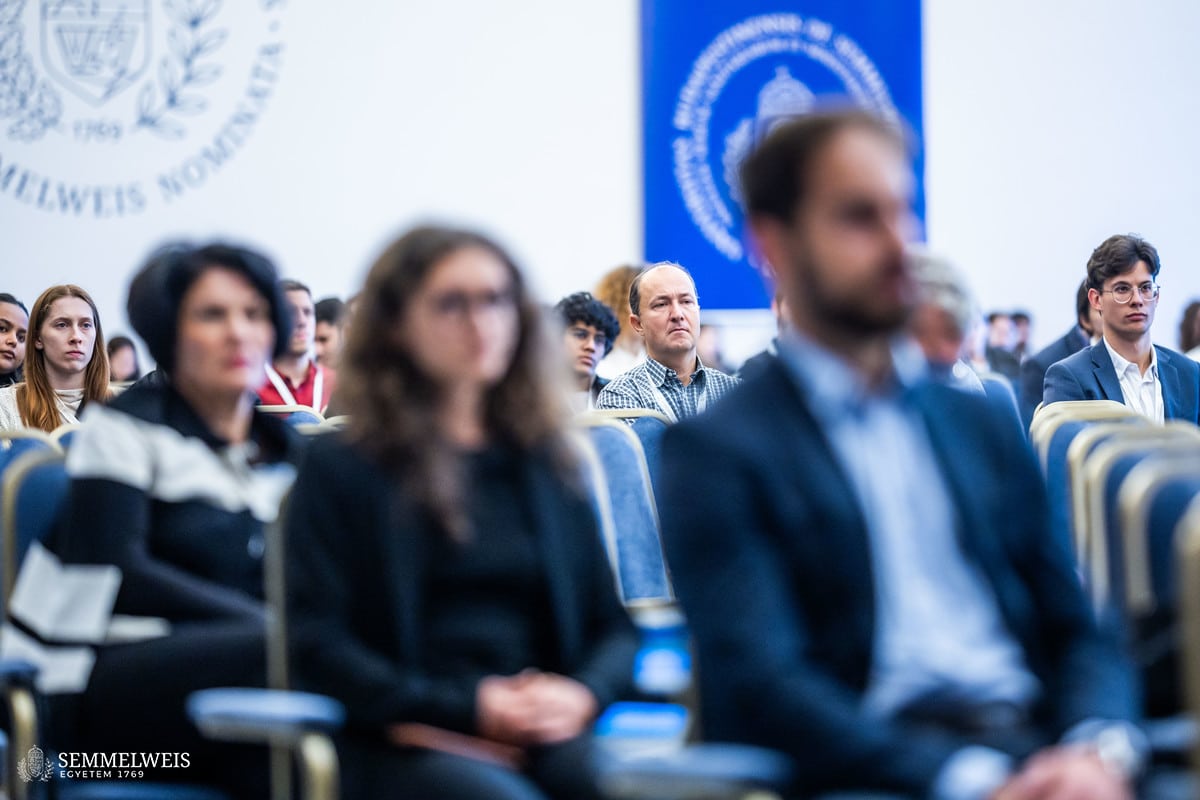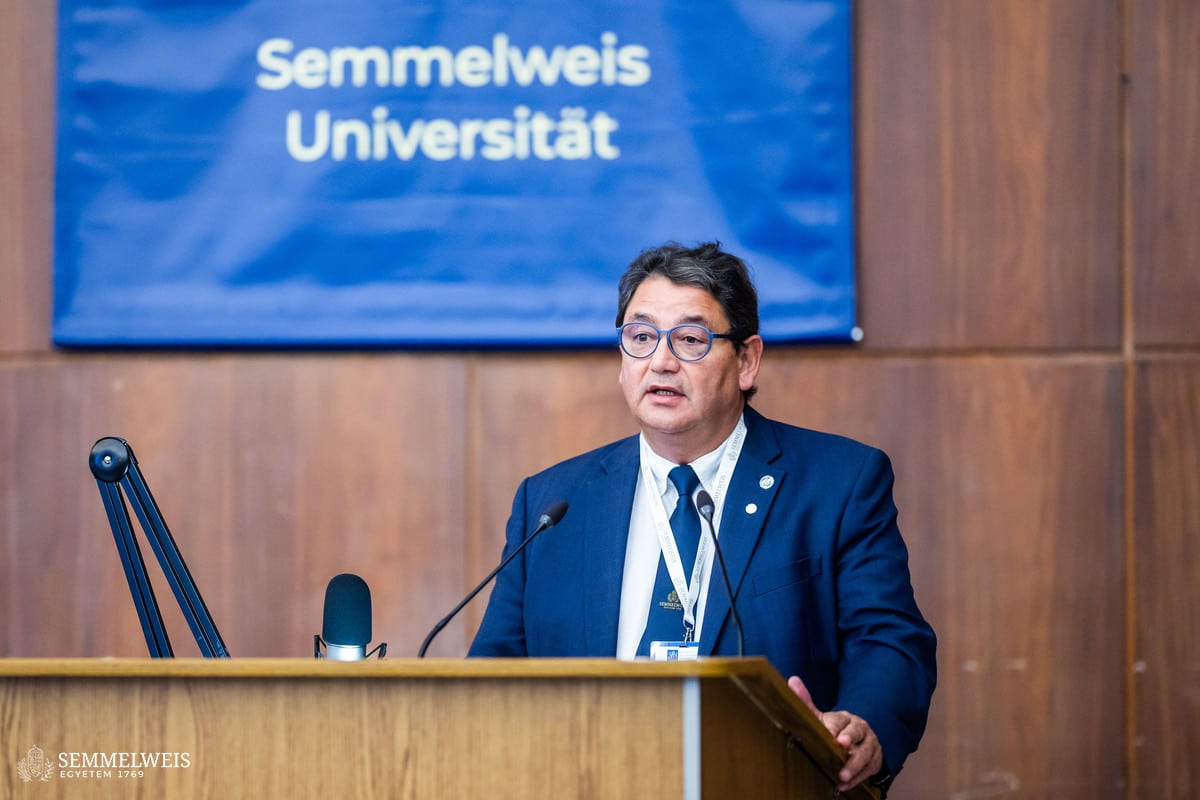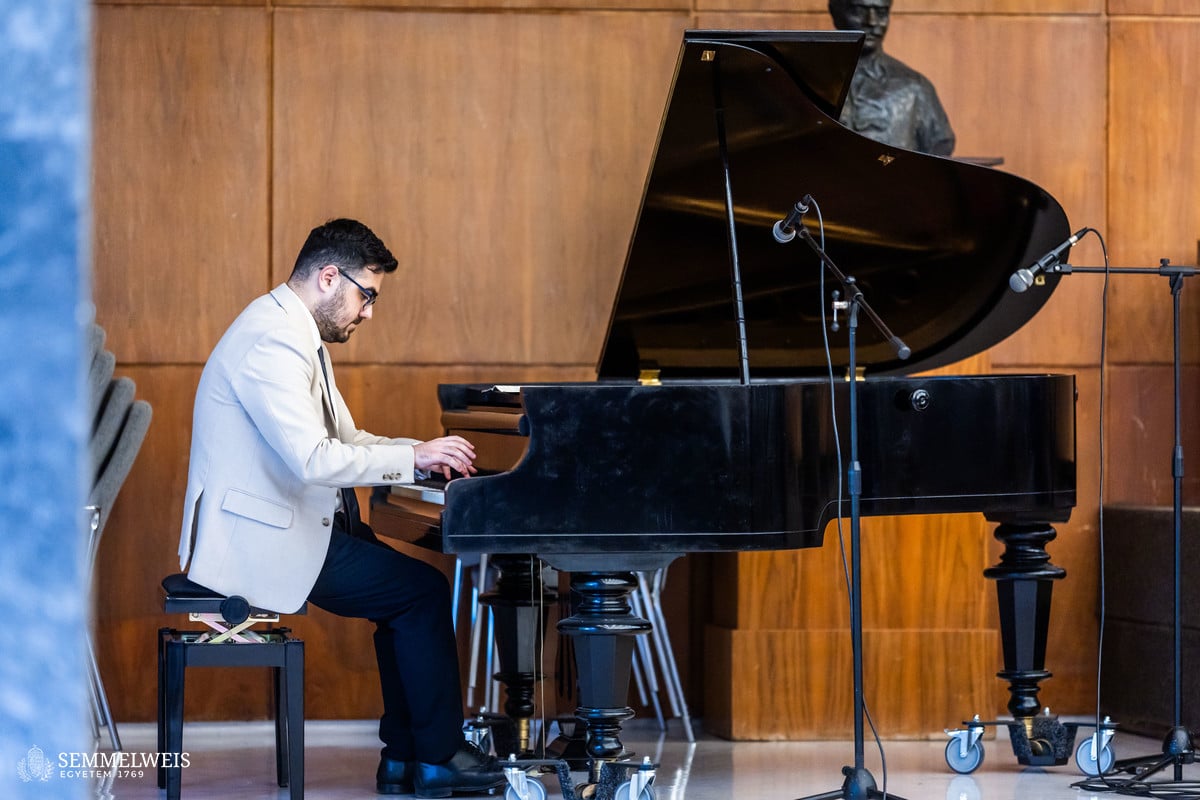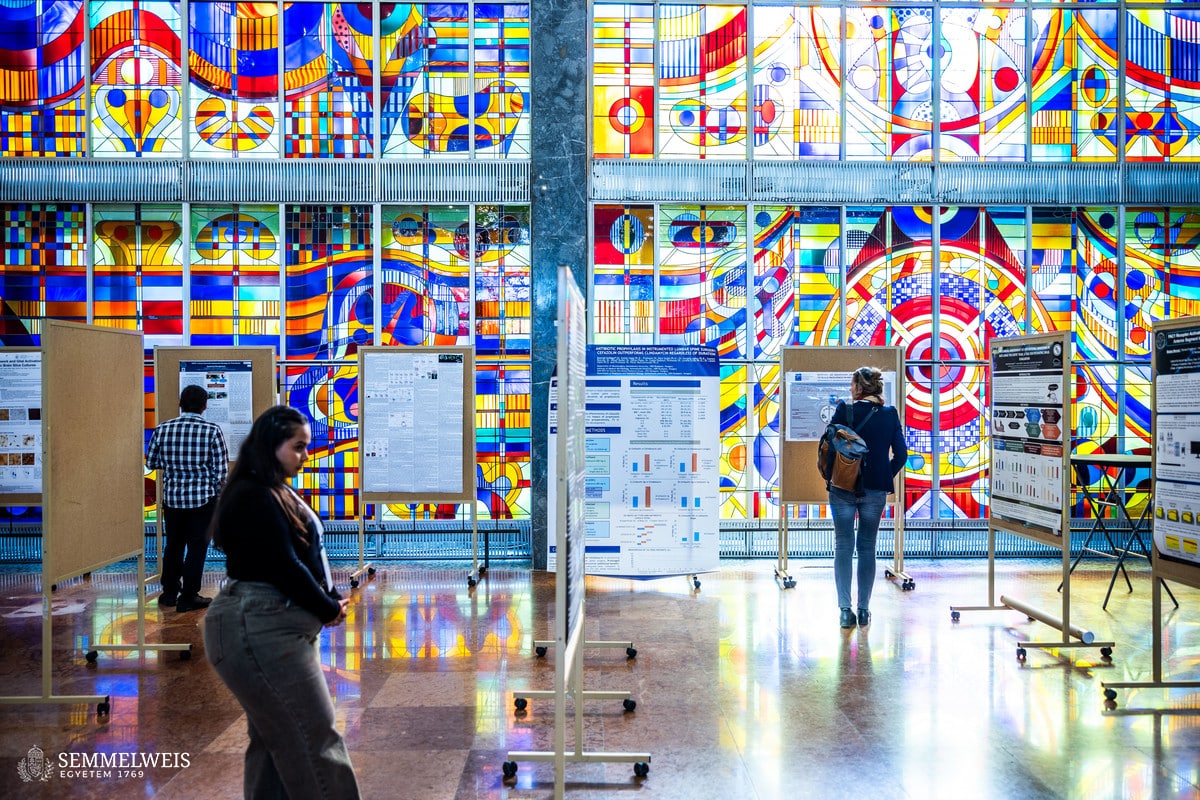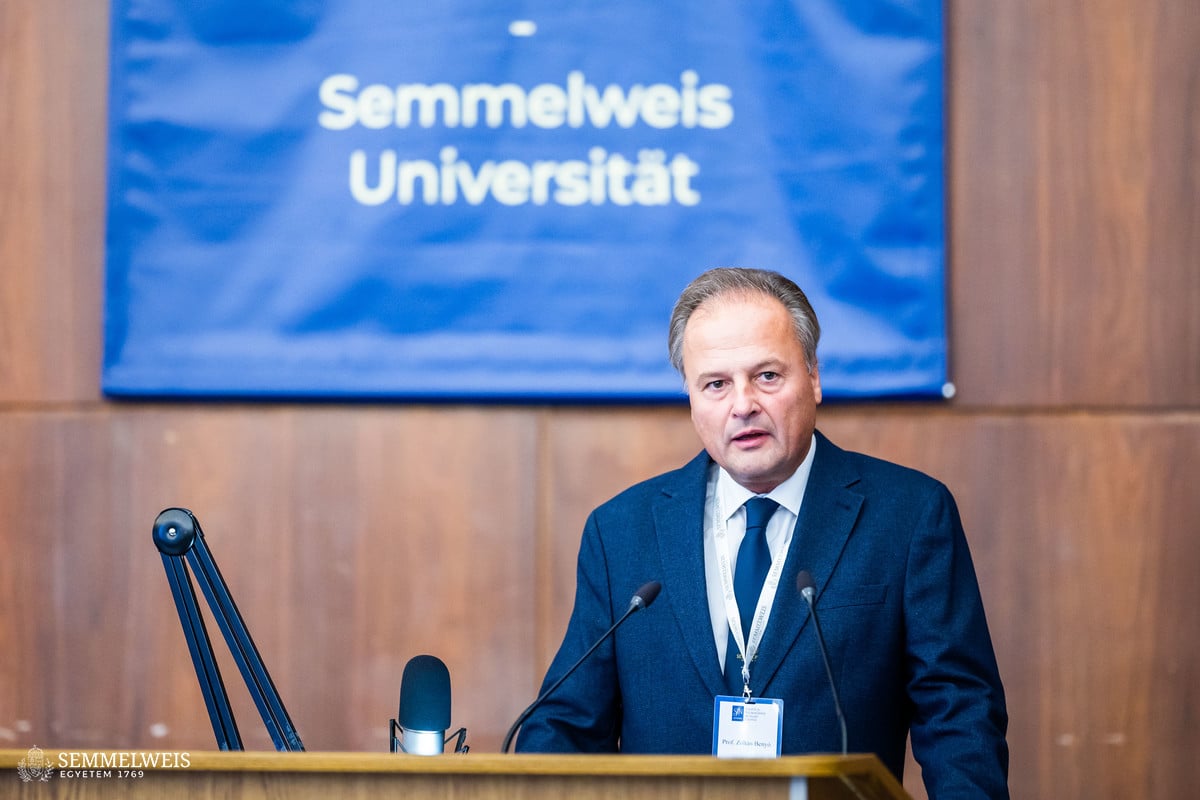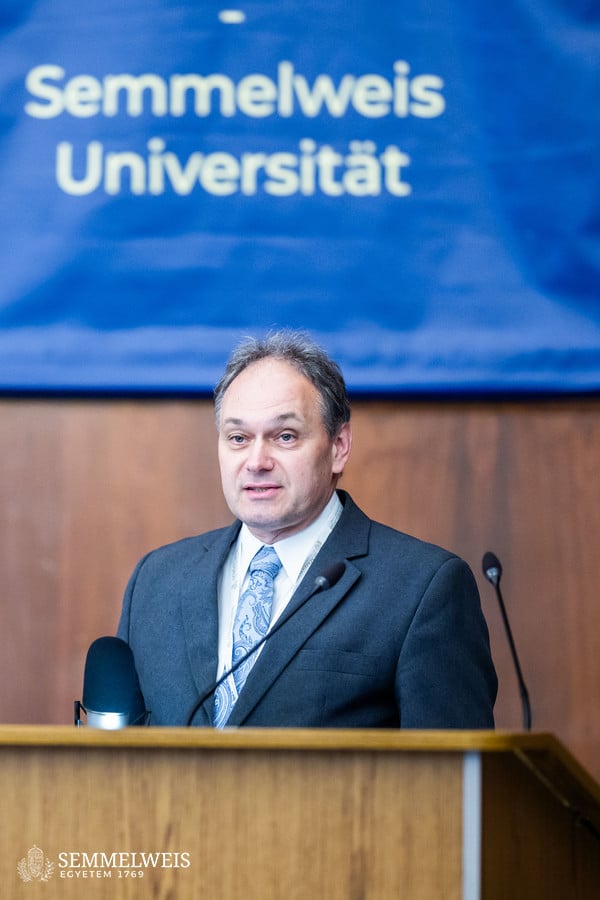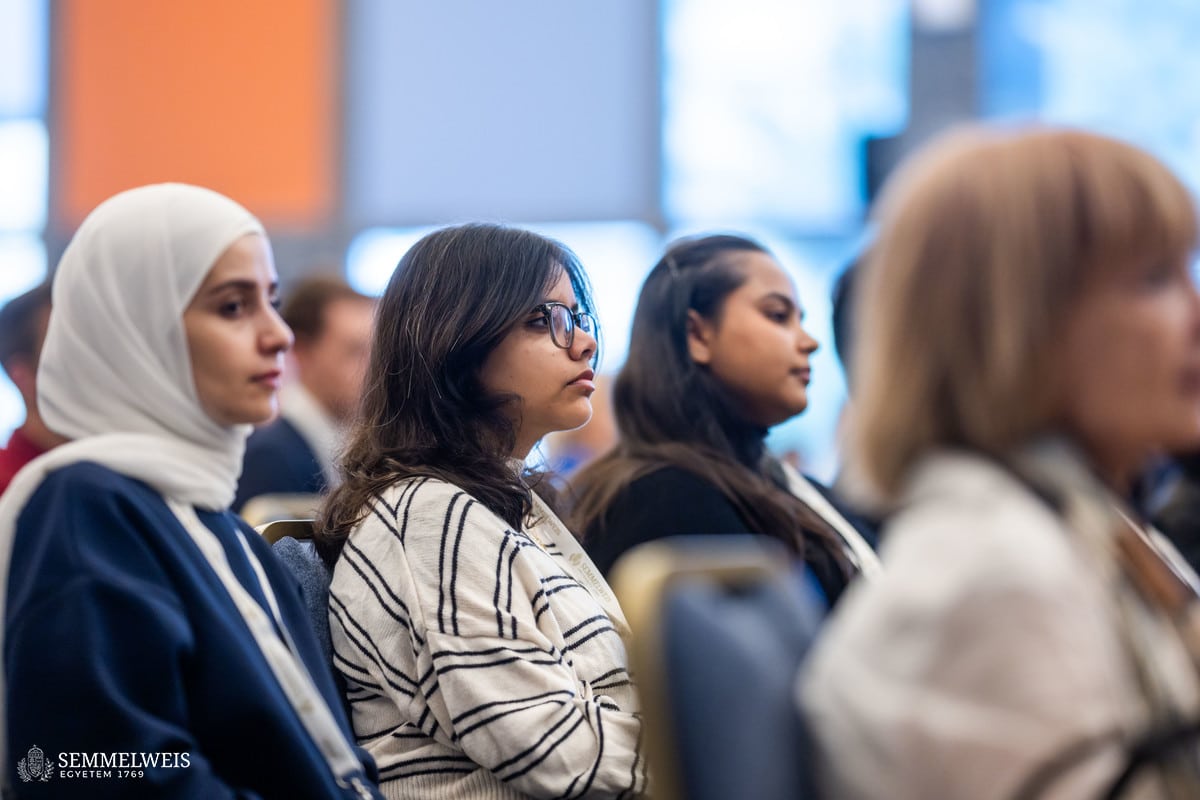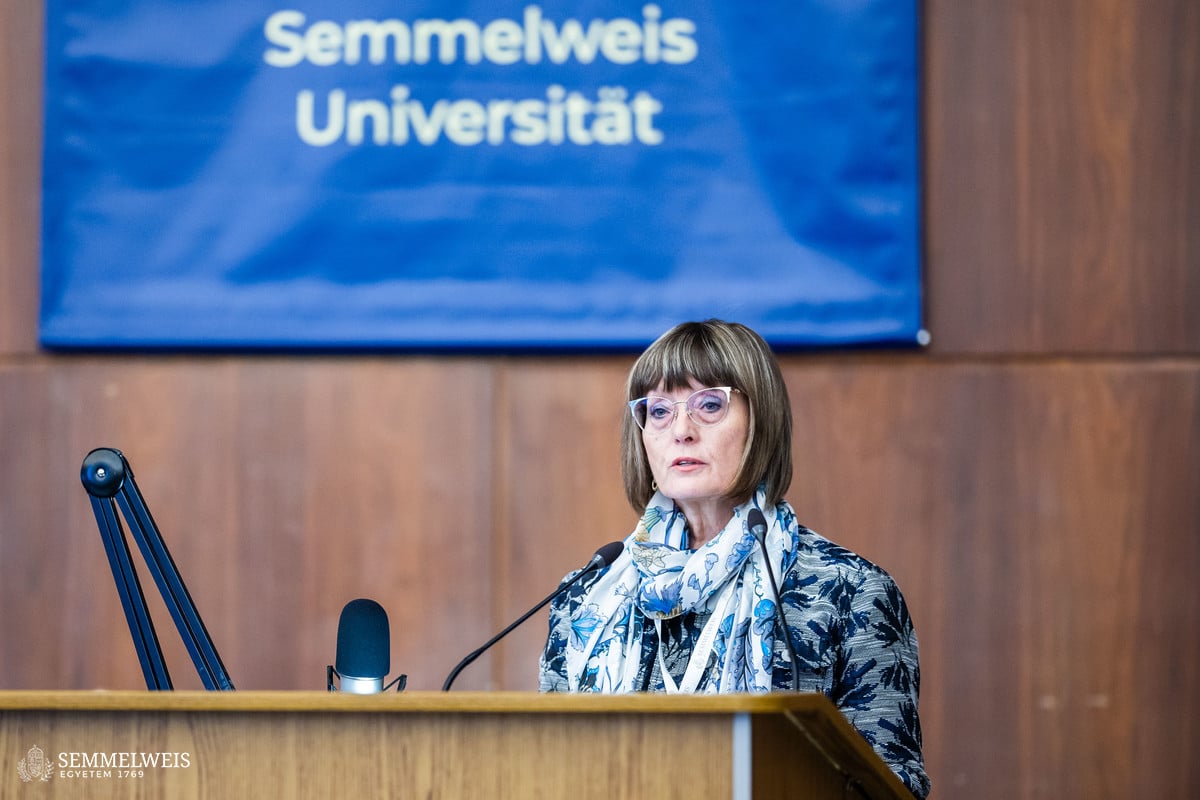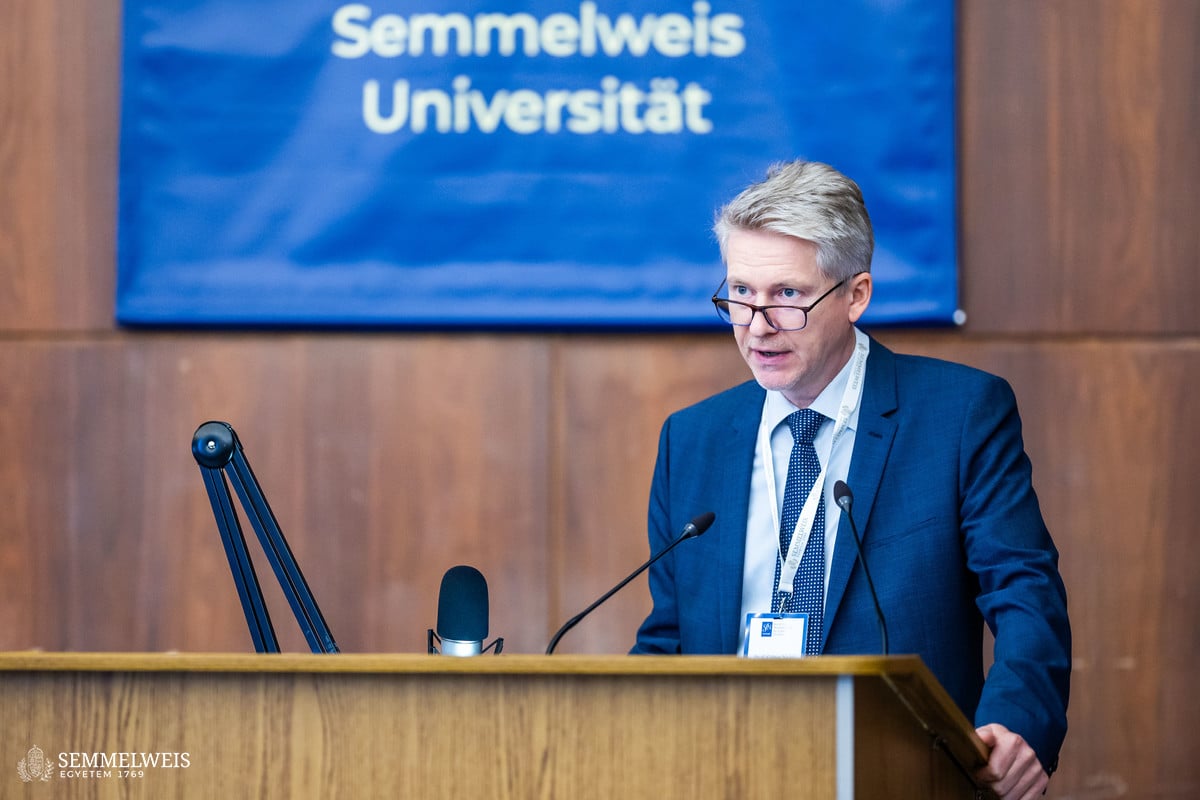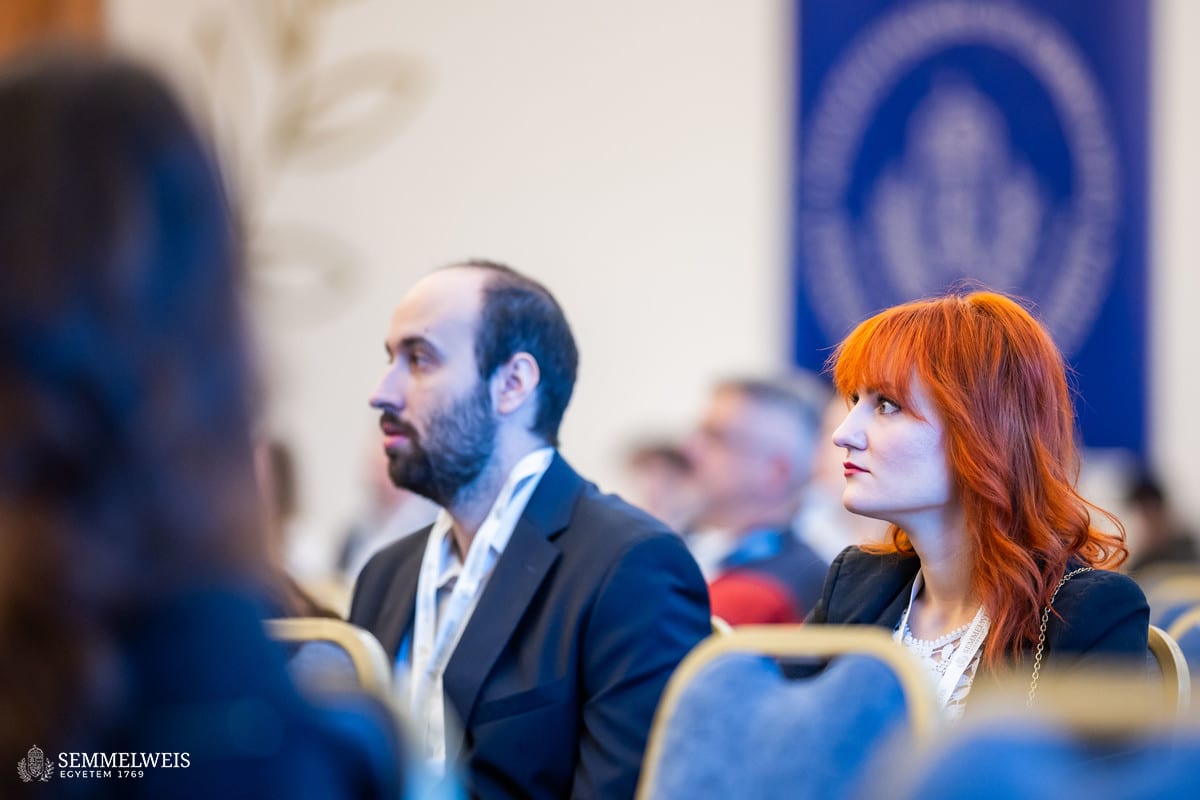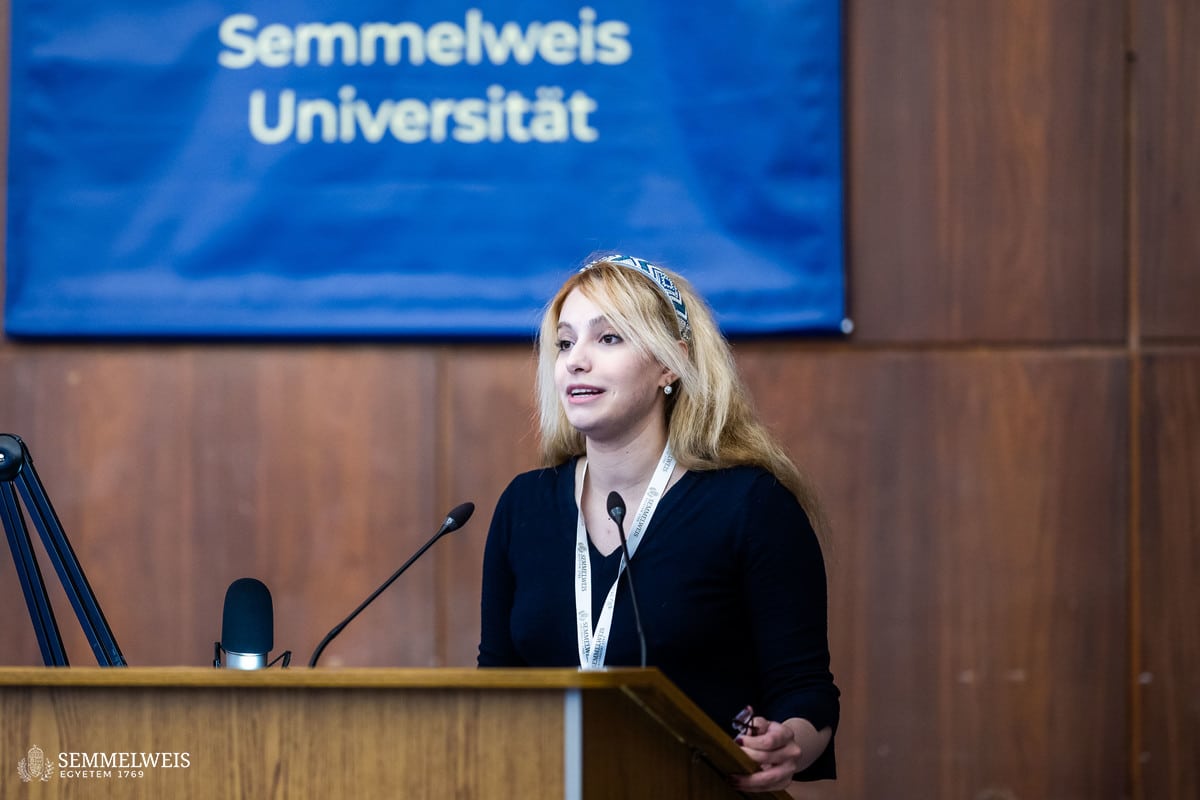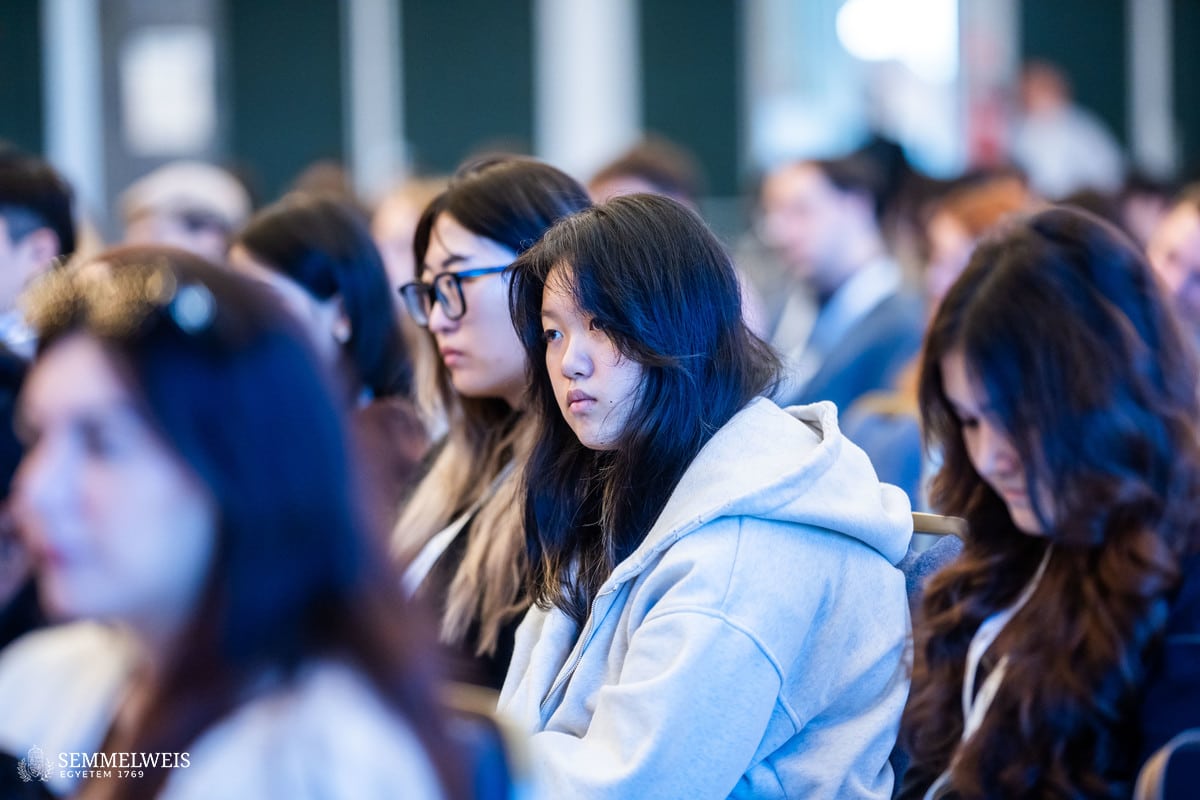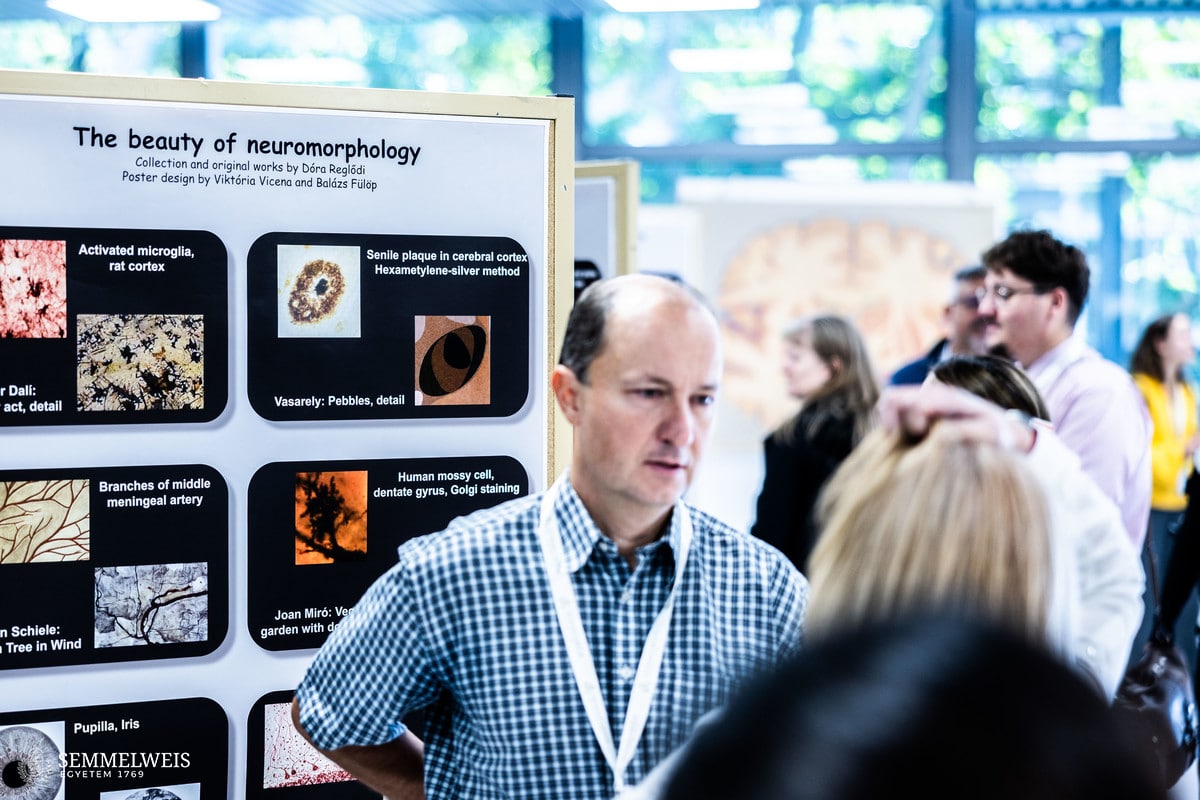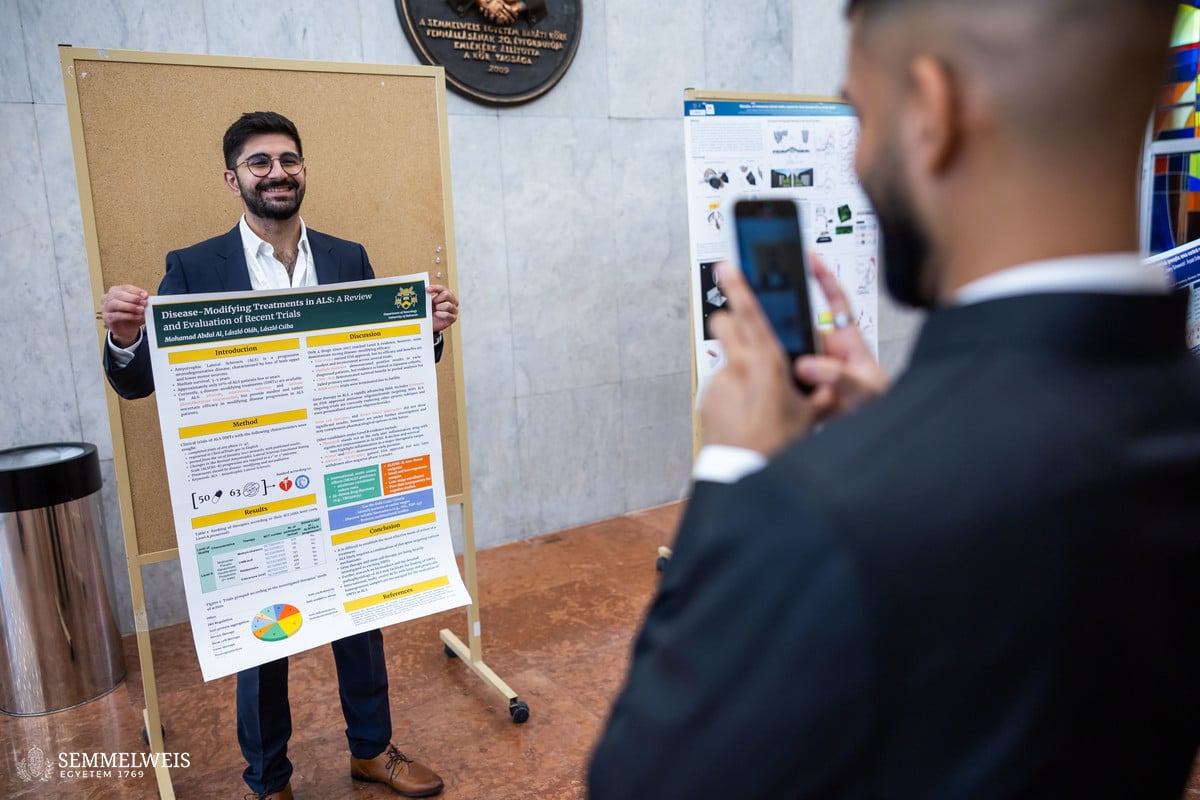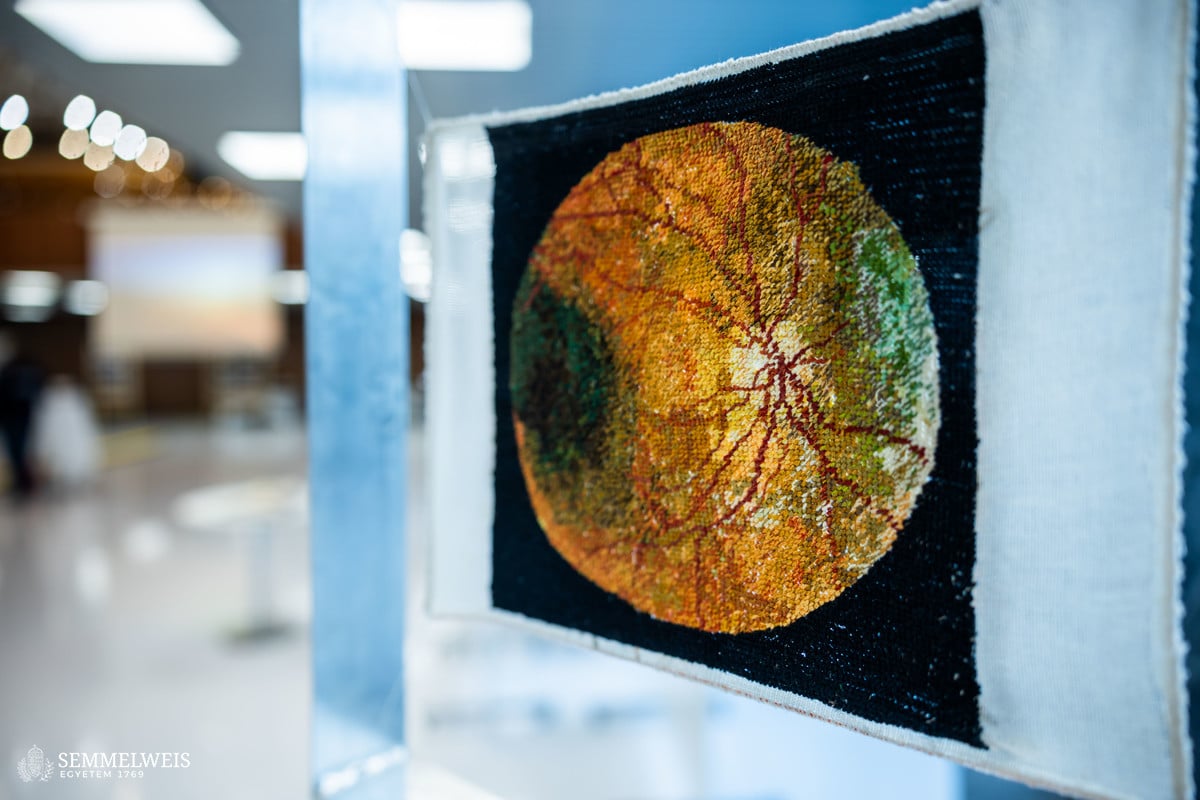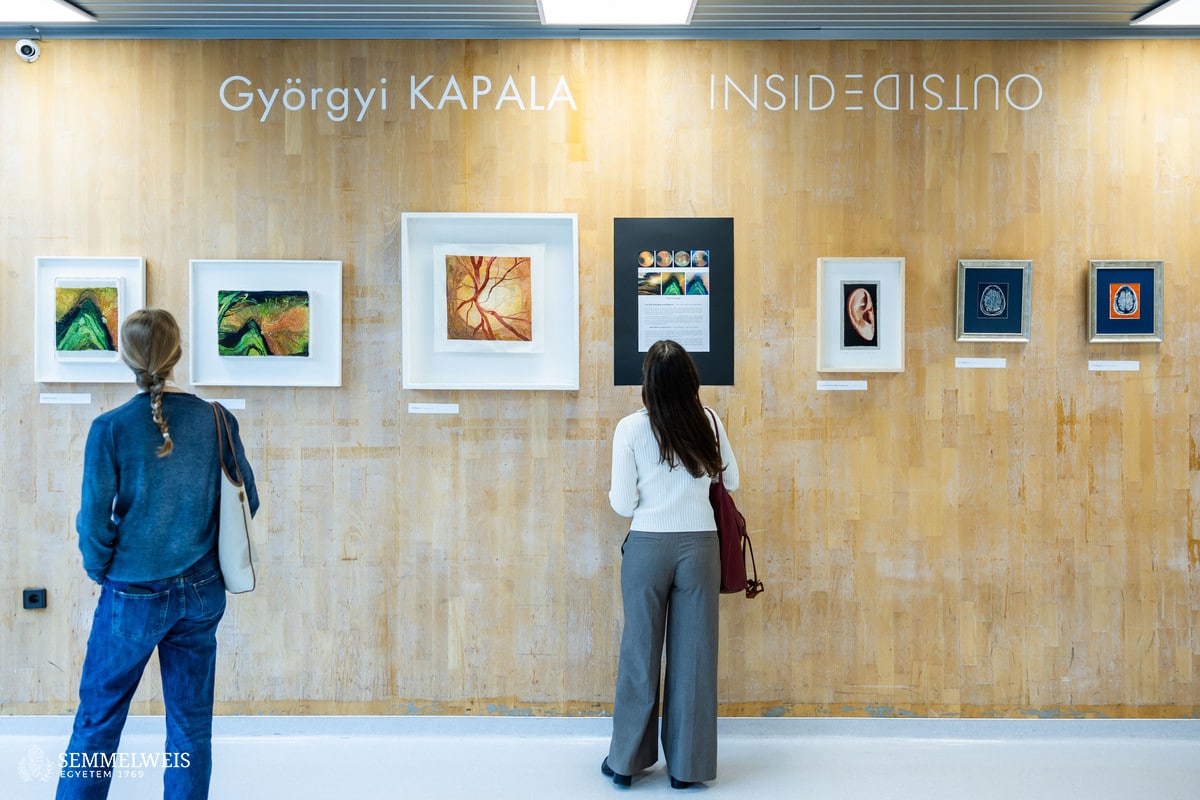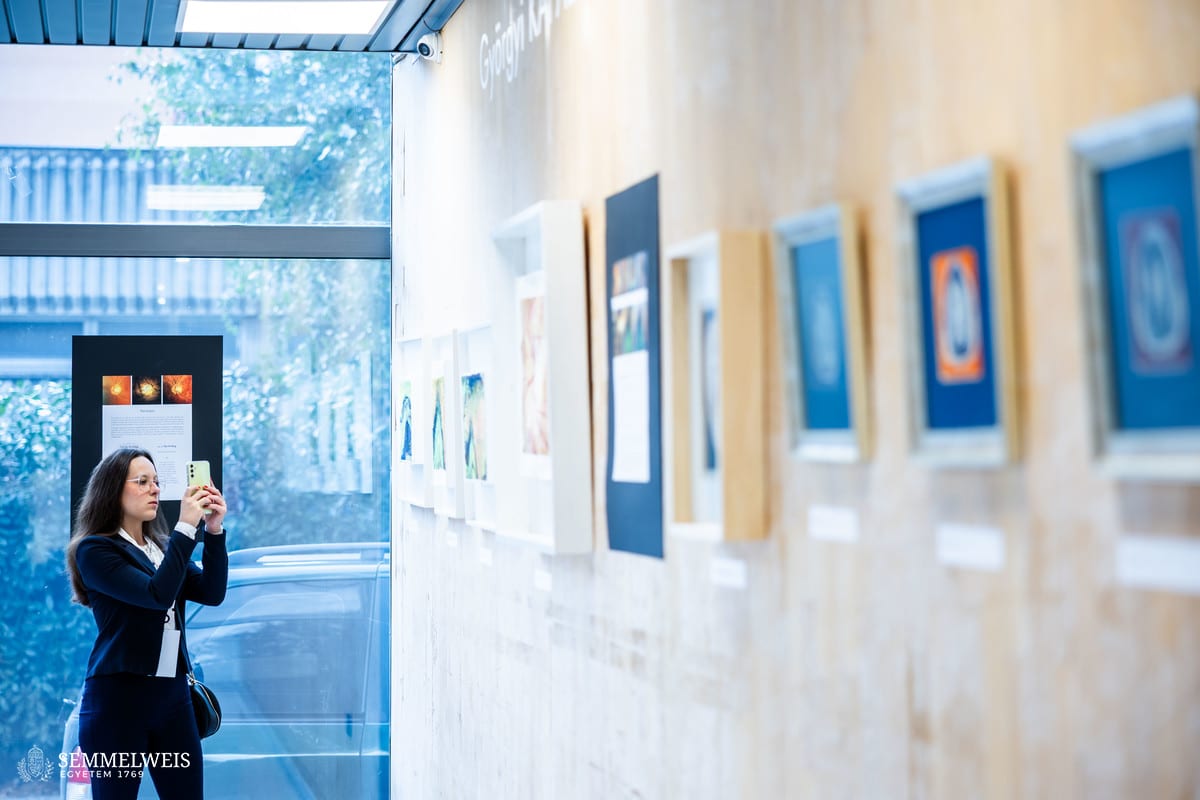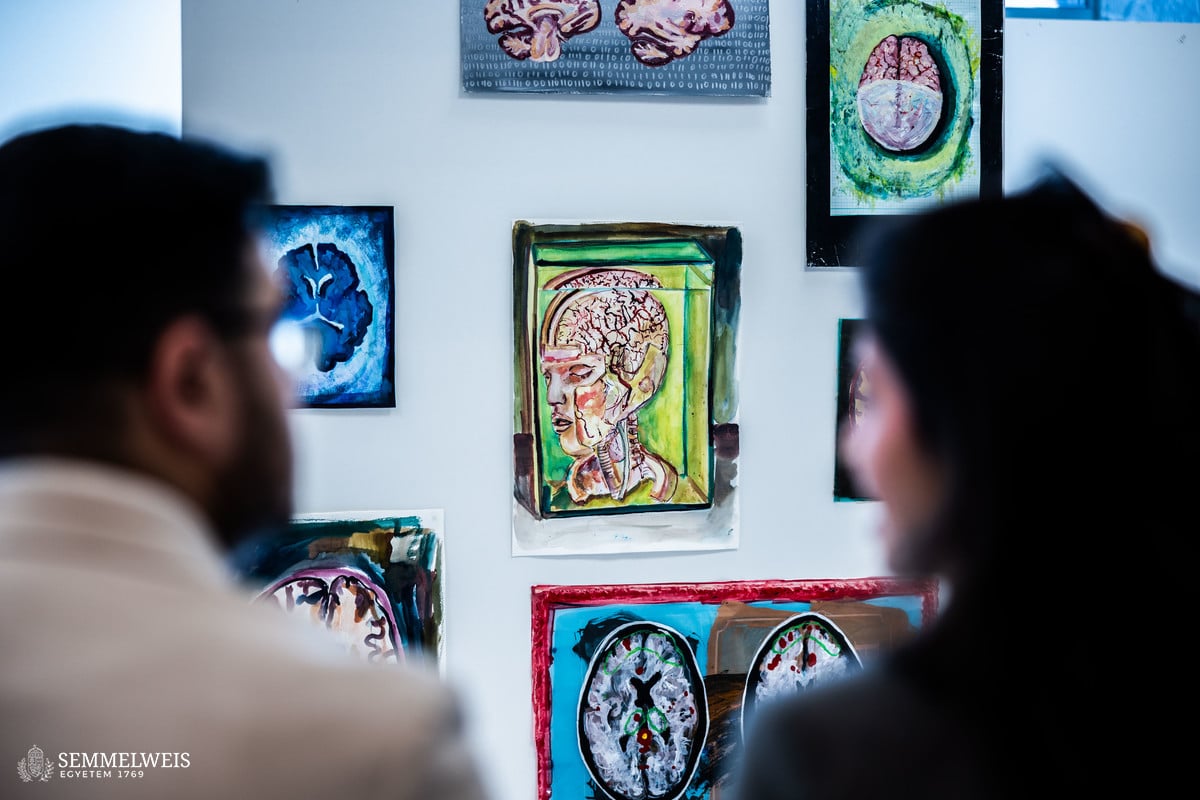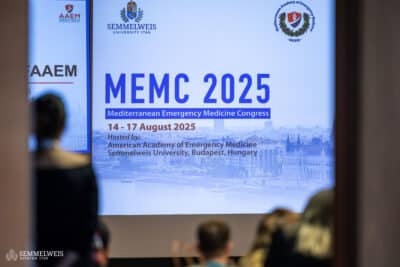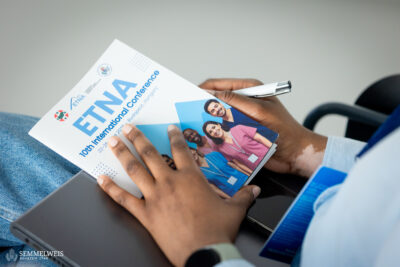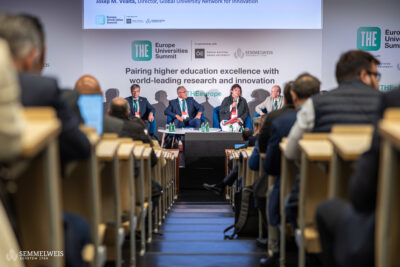Founded in 1969 and based in the United States, the Society for Neuroscience (SfN) is the world’s largest society in the discipline, counting 30,000 members. It has local chapters on every continent, which provide a community-level forum for representatives of the field to exchange knowledge and experience and to raise public awareness. The establishment of SfN Hungary was initiated by 30 members and supported by the Hungarian Academy of Sciences (MTA), former and current leaders of the Hungarian Neuroscience Society (MITT), as well as domestic and international experts working in basic and clinical research.
The local Student Interest Group in Neurology played a key role in organizing the inauguration event for the Hungarian chapter. SIGN is one of 150 student organizations affiliated with the American Academy of Neurology (AAN), operating in medical schools worldwide. Established at Semmelweis University in 2023, it currently boasts over 300 members, comprising both Hungarian and international students.
First, event host Dr. Avin Aphrodite Babakhani – President of Semmelweis SIGN, Vice President of SfN Hungary, and Chair of the Organizing Committee – welcomed the participants.
In his opening speech, Rector Dr. Béla Merkely applauded the longstanding traditions of neuroscience and neurology in Hungary.
He pointed out that with the establishment of SfN Hungary, the country now has its own dedicated representation within the Society for Neuroscience, which enables bilateral cooperation with the United States and provides broader opportunities for both early-career and experienced researchers.
He emphasized that the aim of Semmelweis University, which provided the venue, was to offer the best possible care to patients, to equip students with extensive knowledge, and become a driving force in the scientific world through research and innovation. “Today’s conference is important not only in terms of these aspirations but also because it promotes the dissemination of knowledge related to neurological research, thereby raising the profile of Hungarian science,” the rector noted.
Dr. Zoltán Benyó, President of the Doctoral Council, expressed his hope that many of the medical students attending the conference who were committed to neuroscience would join the university’s doctoral program, which also offers new forms of training.
Speaking about the importance of the conference theme, Dr. Árpád Dobolyi, President of the 600-member Hungarian Neuroscience Society, reminded attendees that neurological diseases placed a huge burden on society. He added, “Neuroscience is exciting. Its goal is to help us understand ourselves because our brains are us. However, we don’t yet have sufficient knowledge about higher brain functions, emotions, intelligence, and consciousness. There is a lot to do.” Referring to the 150-year tradition of Hungarian neuroscience, he highlighted the achievements of Dr. Mihály Lenhossék, Dr. János Szentágothai, and Dr. Miklós Palkovits, and among the younger generation of researchers, Dr. Tamás Freund, Dr. Péter Somogyi, and Dr. György Buzsáki, all three of whom were awarded the Brain Prize.
According to Dr. Anita Kamondi, Department Head at the Neurosurgery and Neurointervention Clinic and Faculty Advisor to the Organizing Committee, the student initiative reminds everyone that the future of neuroscience depends not only on the expertise of senior researchers, but also on the dedication and vision of young scientists and students.
Clinical neuroscience in the 21st century stands at the intersection of discovery and urgent need. From neurodegenerative disorders to epilepsy, from stroke to rare neurological disorders, these conditions affect millions worldwide. Understanding them and finding ways to treat them is not only a scientific duty, but also a deeply human mission. – Dr. Anita Kamondi
She pointed out that research building on the traditions of great predecessors continued with new tools, new collaborations, and new determination, integrating numerous fields such as molecular biology, clinical medicine, psychology, and data science. She also drew attention to the importance of the translational approach, which builds bridges from molecules to patients, from laboratory experiments to clinical trials.
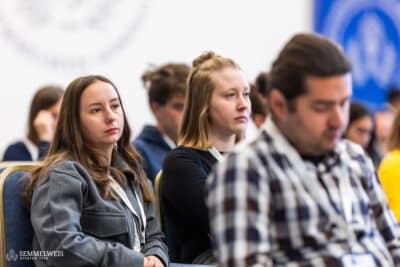 The Hungarian chapter’s mission was presented by Dr. Gábor Nyiri, President of SfN Hungary. He began by emphasizing that, in line with the translational approach, their task was to facilitate the transfer of research results into clinical practice as quickly as possible. This could be achieved through dialogue between researchers and clinical professionals. He also highlighted the importance of bottom-up, inclusive student initiatives through which a new generation of researchers can become more engaged in the scientific community. The local chapter considers its mission to be providing comprehensive information to the public and strengthening the transatlantic partnership.
The Hungarian chapter’s mission was presented by Dr. Gábor Nyiri, President of SfN Hungary. He began by emphasizing that, in line with the translational approach, their task was to facilitate the transfer of research results into clinical practice as quickly as possible. This could be achieved through dialogue between researchers and clinical professionals. He also highlighted the importance of bottom-up, inclusive student initiatives through which a new generation of researchers can become more engaged in the scientific community. The local chapter considers its mission to be providing comprehensive information to the public and strengthening the transatlantic partnership.
The plenary presentations of the two-day conference covered topics including rare neurological disorders, sleep, neuroinflammation, the role of fossils in understanding brain function, game theory and decision-making, neuropharmacology and visual neuroscience, while the 14 workshops helped participants acquire research and publication methodology skills in addition to addressing scientific issues.
On behalf of Semmelweis University, presentations were given by Dr. Mária Judit Molnár, Director of the Institute of Genomic Medicine and Rare Disorders, and Dr. Róbert Bódizs, Research Director of the Institute of Behavioral Sciences. Workshops were held by Dr. Loránd Erőss, Director of the Neurosurgery and Neurointervention Clinic; Dr. Zsolt Unoka, Deputy Director of the Department of Psychiatry and Psychotherapy; Professor Dr. László Tretter of the Department of Biochemistry; Dr. Anna Gaál, resident at the Department of Neurology; and staff members of the Center for Translational Medicine. Among the international experts, Susan Amara, Scientific Director at the National Institute of Mental Health, gave a lecture on neurodevelopmental disorders, Christopher A. Walsh, Professor at Harvard Medical School, spoke about neurogenomics, while Kang Shen, Professor at Stanford University, delivered a presentation on the mechanisms of neural circuit assembly.
Art also played a prominent role during the event, with pianist Sina Moghimnejad performing Franz Liszt’s La Campanella and Frédéric Chopin’s Polonaise in A-flat major at the opening ceremony. Participants also had the opportunity to enjoy Dr. Dóra Reglődi’s Neuroanatomy and Györgyi Kapala’s Inside-Outside exhibitions. As an accompanying event to the scientific conference, a thematic exhibition on the birth of modern neurology was opened, which will run until March 2026 at the Semmelweis Museum of Medical History.
Judit Szabados-Dőtsch
Photos by Bálint Barta – Semmelweis University
